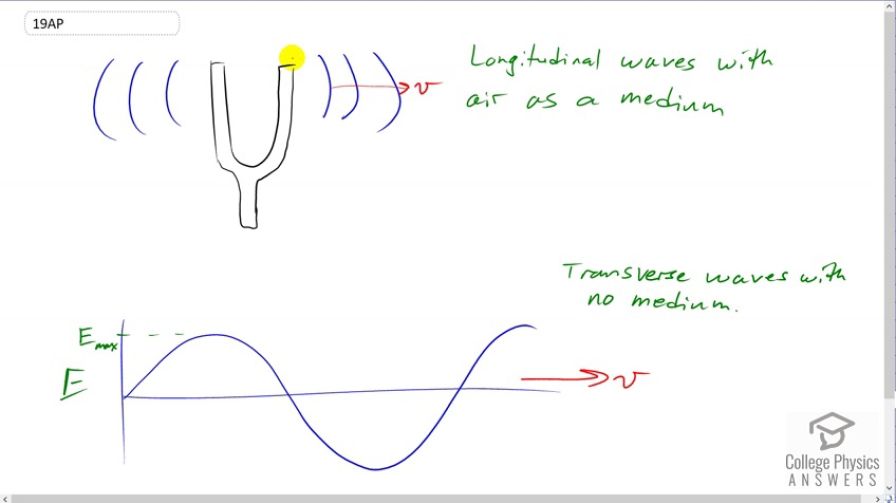Question
What is the difference between the waves coming from a tuning fork and electromagnetic waves?
Final Answer
Please see the solution video for an explanation of the difference.
Solution video
OpenStax College Physics for AP® Courses, Chapter 16, Problem 19 (Test Prep for AP® Courses)

vote with a rating of
votes with an average rating of
.
Video Transcript
This is College Physics Answers with Shaun Dychko. The waves created by a tuning fork are longitudinal waves that have air as a medium. So what happens is the tines of the fork are vibrating back and forth and they're hitting the air beside it. And when doing so cause the air to gather up when it gets hit and make a high pressure section. And then the tuning fork tine moves away and then that creates a bit of a vacuum. And then it swings the other way and hits again creating a high pressure area. And so you have these periodic positions of compression and rare fraction, that's the word to describe this low pressure region in between the compression regions. So, this is longitudinal wave because the direction of propagation of the wave is in the same direction as the wave perturbation. So, the wave is compressed this way and it's also moving along that same access. And also it requires a medium to move in so it requires there to be air here. If this tuning fork was vibrating in space which you could very well do, it would not produce a sound wave because a sound wave requires air or some other kind of medium to propagate that wave. Now, considering an electromagnetic wave, this is a graph of one of the electromagnetic wave is. It's an oscillating electric field, as well as a perpendicular oscillating magnetic field. So this is going perpendicular to the plane of the electric field. So it's called electromagnetic wave because these are electric and magnetic fields that are reinforcing each other. So, a changing magnetic field produces a changing electric field and they keep inducing each other here. And so they propagate. But the direction of perturbation of this electric field is that's up and down say, but the direction of propagation of the wave is perpendicular to that. And so that's what makes us say transfers wave and that the perturbation is perpendicular to the direction of propagation. And no medium is required for these electromagnetic waves. They travel through space just fine and that is why we see light from distance stars because the light is an electromagnetic wave which can travel through a vacuum.